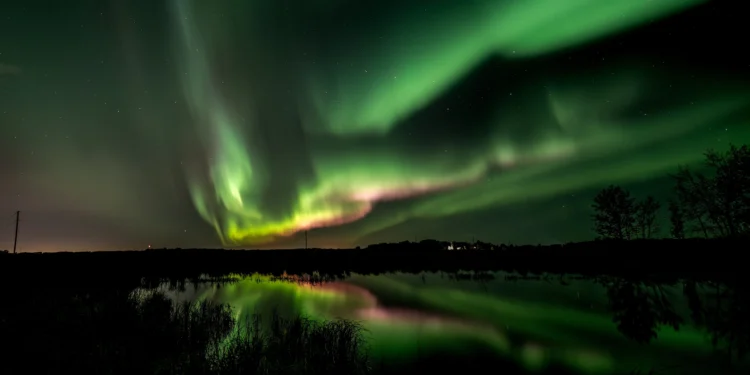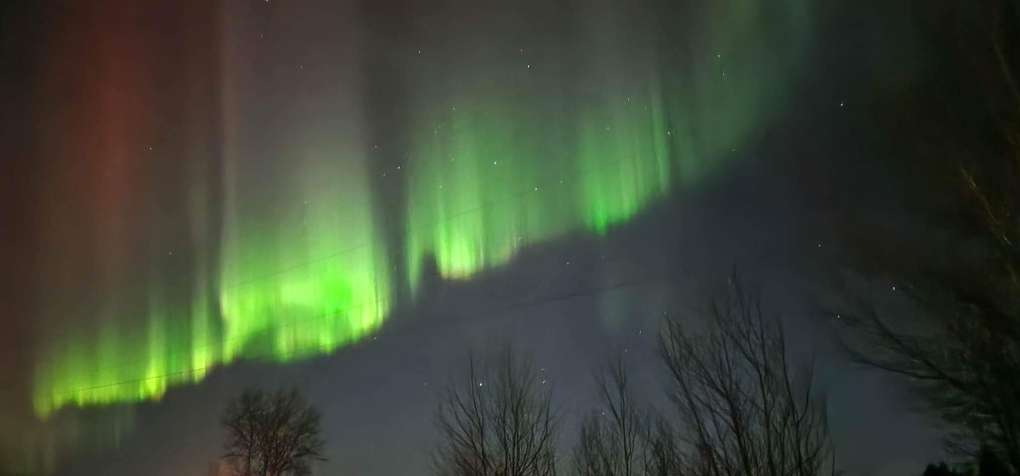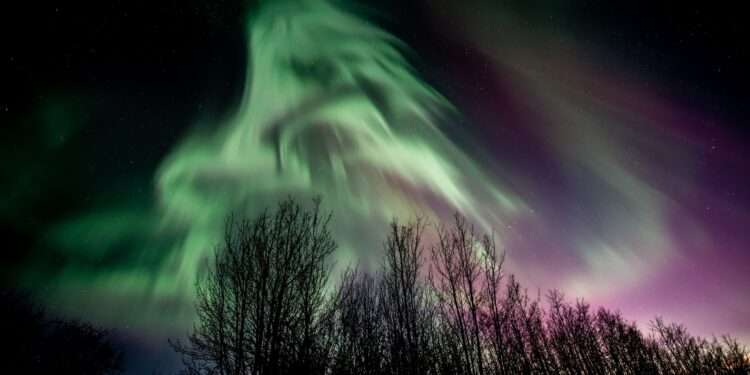A breathtaking spectacle of Northern Lights illuminated the night sky in northcentral Alberta on Monday. Spectators were treated to a vibrant display of purple, pink, teal, green hues in what experts are calling incredible aurora borealis event. Frank Florian, senior manager of planetarium of space sciences at TELUS World of Science Edmonton, reported that the display began in the early evening, even visible in light-polluted areas like the City of Edmonton. Many people witnessed and photographed this awe-inspiring natural phenomenon.

The catalyst for this stunning show is the sun. A few days prior, the sun ejected a part of its atmosphere in what’s known as a coronal mass ejection (CME). When these CMEs are directed toward Earth, they interact with our planet’s magnetic field and atmosphere,causing gases to emit colorful light.
Florian explained that the sun is currently approaching its peak activity phase, known as solar maximum, as part of an 11-year solar cycle. Astronomers anticipate that this solar maximum will occur by the end of 2023, making auroral events more frequent.
The variety of colors observed in the aurora borealis can be attributed to different gases in Earth’s atmosphere. Atomic oxygen in the upper atmosphere emits red light when excited by charged particles, while molecular oxygen in the lower atmosphere produces green light. Additionally, nitrogen gas in our atmosphere contributes to red and blue hues, resulting in a mesmerizing combination of colors, including pinks and purples.
The auroral display was so powerful that it was even visible in the southern hemisphere, appearing predominantly as a red hue. Known as the southern lights or aurora australis, people in New Zealand had the rare opportunity to capture stunning red aurora sightings.
The University of Alberta’s Aurora Watch group monitored geomagnetic activity in the Edmonton region, noting a high level of activity between 9 p.m. and midnight MST. They reported a greater than 70% probability of auroral displays during that time.

Northern Lights were reported in various locations near Edmonton, including Fort Saskatchewan, Drayton Valley, St. Albert, and Sturgeon County. AuroraWatch offers real-time monitoring of geomagnetic activity in the area and provides a free email alert service to notify enthusiasts when auroral displays are likely.
For those eager to witness the Northern Lights, experts recommend the following tips:
1.Look north after dark.
2.The prime viewing time is around or just before midnight.
3.Escape light pollution by venturing outside the city.
In summary, this recent aurora borealis event in Alberta provided a dazzling light show, experts believe more such displays may be on the horizon as the sun approaches its solar maximum in 2023.



